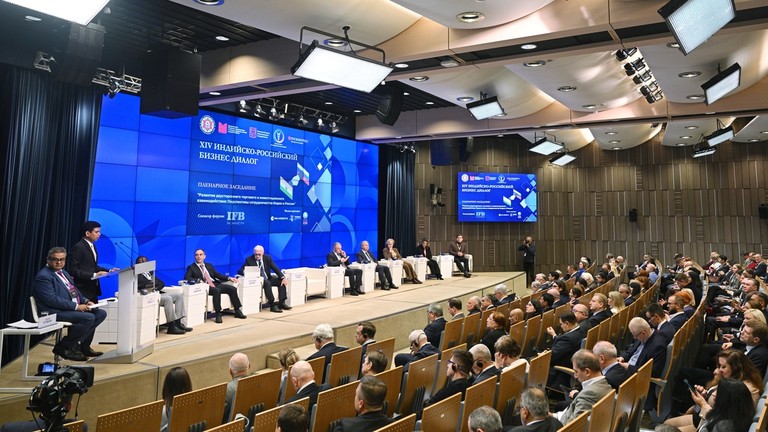NewsRescue
Officials welcomed the considerable increase in bilateral transactions between Russia and India in recent months during an event held in Moscow on Tuesday, but cautioned that trade diversification has yet to materialise.
Russia continues to be a major source of hydrocarbons, accounting for more than one-third of India’s imports, as well as mineral fertilisers, diamonds, and agricultural items.
According to Russian Ambassador Denis Alipov, who addressed the 14th Indian-Russian Business Dialogue via video link, there are numerous untapped markets for both Russian and Indian exporters.
“According to Indian government data, Russia-India trade turnover reached $54.7 billion in the first ten months of 2023.” “Moscow has risen to the position of one of New Delhi’s top four major trading partners,” Alipov said.
According to figures from the commerce ministry, Russia has become India’s second-largest import source for the first seven months of this fiscal year. Imports from Russia grew by 64% to $36 billion between April and October, owing mostly to increasing crude oil and fertiliser exports. Imports totaled $22 billion over the same period last year.
Ambassador Alipov advised Indian firms to look for prospects in areas like as automotive components, shipbuilding, electronics, consumer retail, and tourism infrastructure. He highlighted that the Russian market provides promising opportunities in industries where India has traditionally been a major player, such as pharmaceuticals and information technology.
“India can and should take advantage of the opportunity to replace items that Russia used to import from Europe in order to address the trade imbalance, which now stands at more than $40 billion.” “Trade diversification will help expedite the conclusion of free trade talks,” he emphasised.
Alipov also emphasised the importance of improving mutual settlement systems and transitioning to settlements in national currencies, emphasising continued conversations between regulatory organisations in the banking and financial sectors “at a systematic level.”
